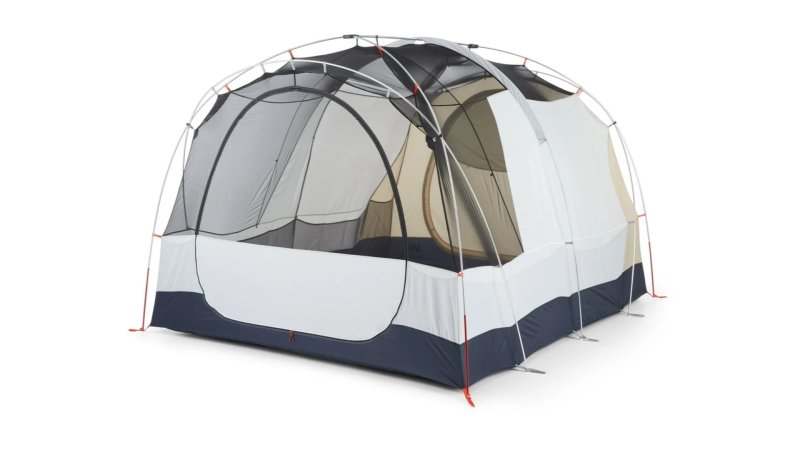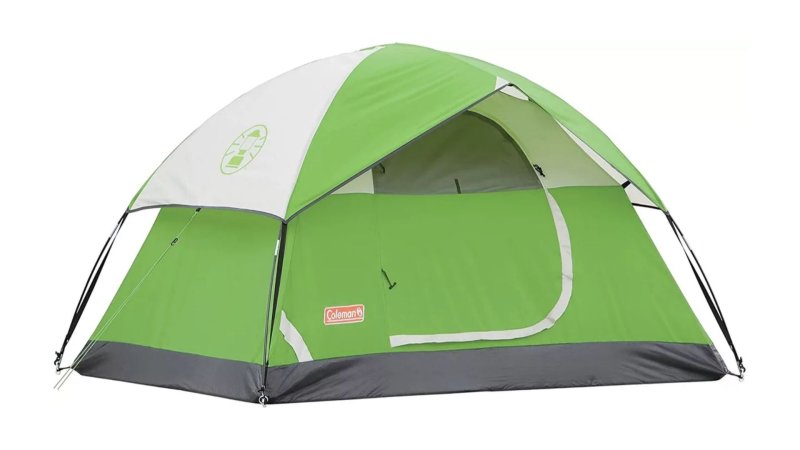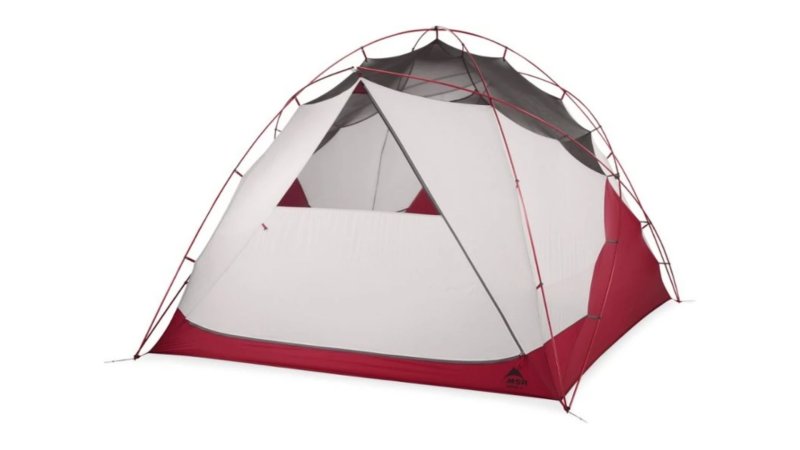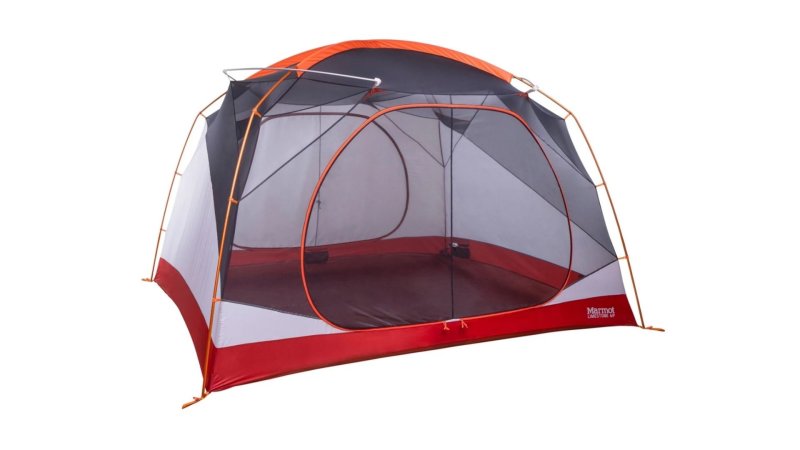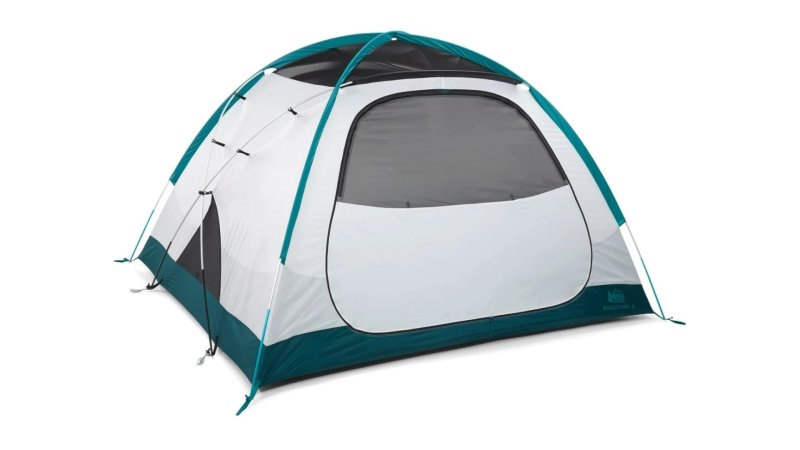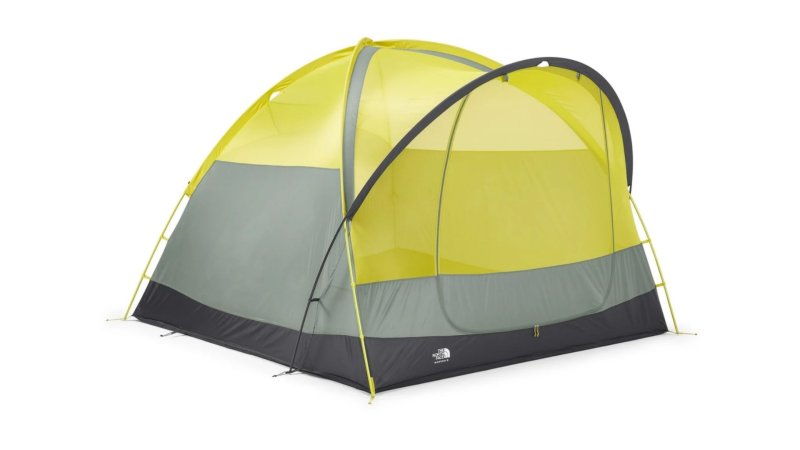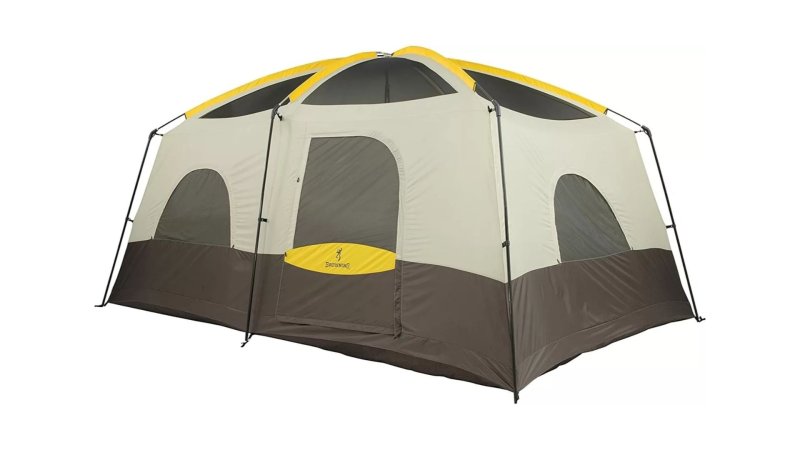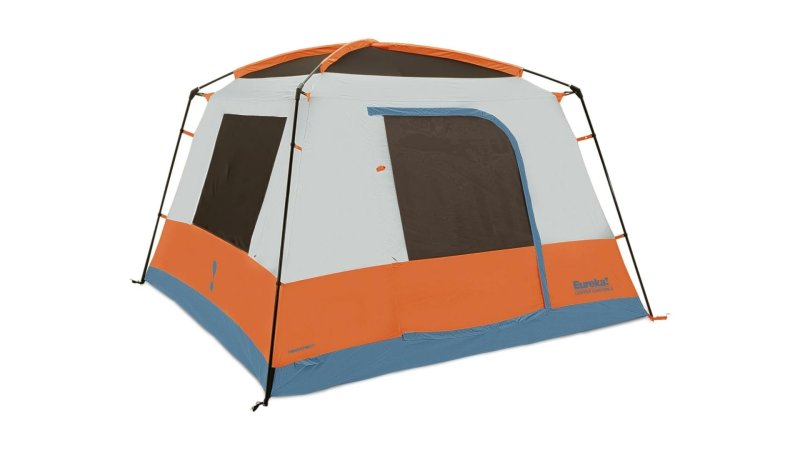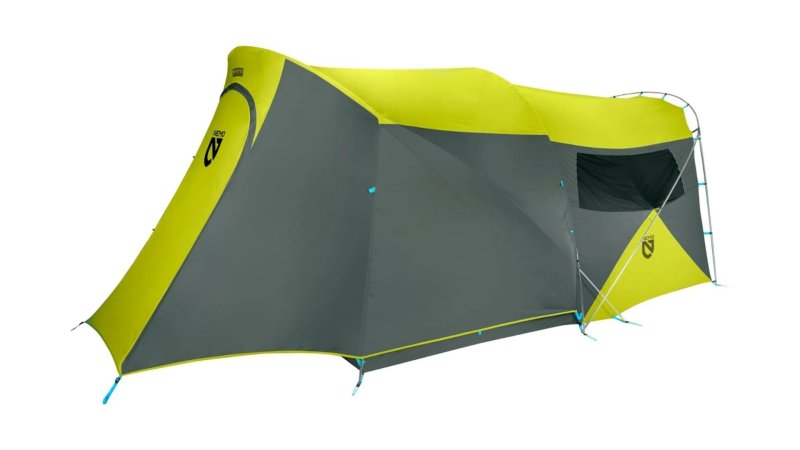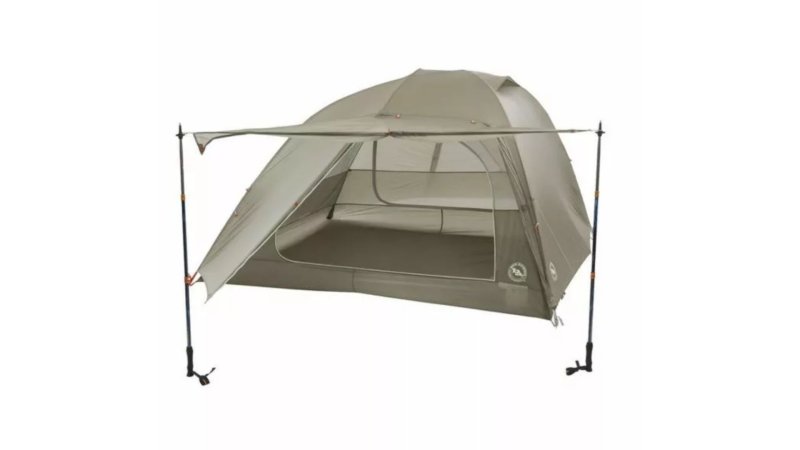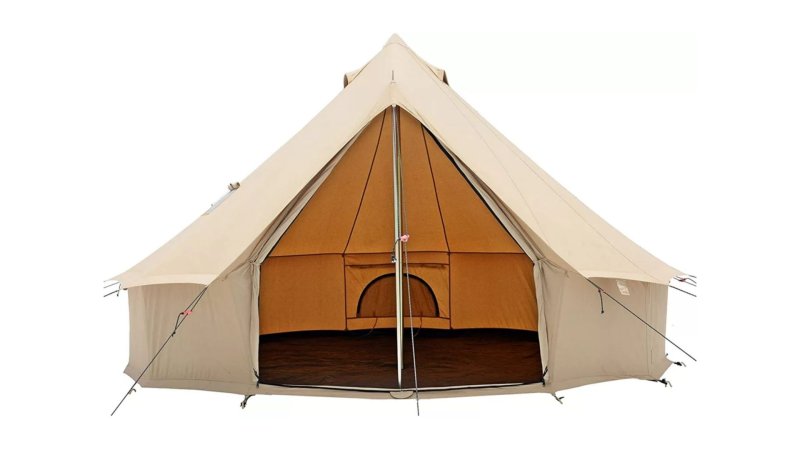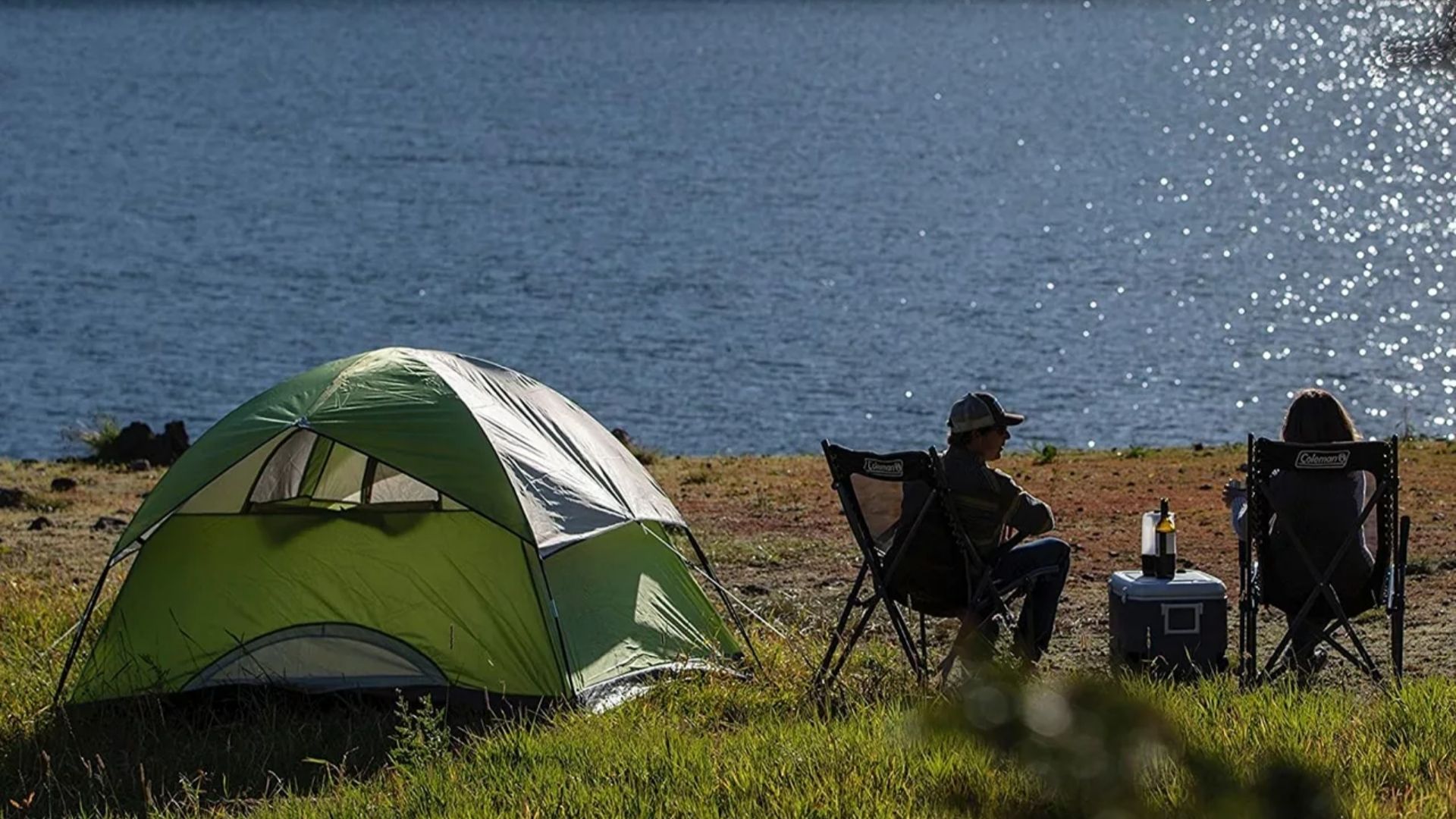

We may earn revenue from the products available on this page and participate in affiliate programs.
Camping can be a great way to bring the whole family together, and it’s even better when you have the right family camping tent. Tents vary dramatically in size and style, so you’ll need to do some research before deciding on your new shelter.
We assembled a list of the best family camping tents, whether you are looking for a three-season tent, one fit for backyard camping, or a backpacking tent. Some have huge vestibules (the camping equivalent of a “mudroom”), while others feature multiple rooms for extra privacy. No matter what you’re looking for, we’ve got you covered with our picks of the best family camping tents..
Best Overall
REI Co-op Kingdom 6
Pros
- Tall and spacious with over 80 sq. feet of floor area and a peak height of over 6 feet
- Adjustable room divider
- Two large doors
- Storage bag with different compartments
- Ample storage space
Cons
- Not great in wind or heavy rain
Product Specs
- Weight: 21 pounds 6 ounces
- Peak Height: 6 feet 3 inches
- Floor Dimensions: 10 feet x 8 feet 4 inches
Best Value
Coleman Sundome
Pros
- Great bang for your buck
- Spacious with 100 sq. feet of floor area
- Relatively light
- Easy setup
Cons
- Only one door, no vestibule
- Not very weather-resistant with partial rainfly
- Cheap materials
Product Specs (6-person)
- Weight: 16.1 pounds
- Peak Height: 6 feet Floor
- Dimensions: 10 feet x 10 feet
Editor’s Choice
MSR Habitude 6
Pros
- Lightweight
- Durable materials
- Protection against strong winds, rain, and snow
- Spacious with over 80 sq. feet of floor area
- Built-in porch light
Cons
- Pricey
- Only one door and one vestibule
- Not the best ventilation
Product Specs
- Weight: 14 pounds
- Peak Height: 6 feet 1 inch
- Floor Dimensions: 10 feet x. 8 feet 4 inches
Best Camping Tent for Weather Resistance
Marmot Limestone 6P Tent
Pros
- Durable and high-quality, great for more seasoned campers
- Easy setup
- Superior protection in rain and wind
- Versatile door and vestibule
Cons
- Vestibule not large enough to hang out in
- Fewer features than competitors
Product Specs
- Weight: 17 pounds 9 ounces
- Peak height: 6 feet 4 inches
- Floor dimensions: 10 feet x 8 feet 4 inches
Best 4-Person Camping Tent
REI Co-op Base Camp 4 Tent
Pros
- Two doors and huge vestibule for storing gear
- Highly weather-resistant
- Easy setup
- Roomy with 60 sq. feet of floor space
Cons
- Heavy, not ideal for backpackers
- No mesh for stargazing
Product Specs
- Weight: 16 pounds 14 ounces
- Peak height: 5 feet
- Floor dimensions: 8 feet 4 inches x 7 feet 2 inches
Best 6-Person Camping Tent
The North Face Wawona 6
Pros
- Huge vestibule, with tons of storage space
- Spacious tent with 80 sq. feet of floor area
- Relatively weather-resistant
- Durable materials
- Good ventilation
Cons
- Relatively expensive
- Poor carry bag design
Product Specs
- Weight: 20 pounds 15 ounces
- Peak Height: 6 feet 8 inches
- Floor Dimensions: 10 feet x 8 feet
Best 8-Person Camping Tent
Browning Camping Big Horn Tent
Pros
- Huge with a peak height over 7 feet and floor area of 150 square feet
- Affordable
- Good ventilation
- Room divider for privacy
- Easy to set up
Cons
- Heavy, at over 34 pounds
- Not ideal for high winds
- No vestibule
Product Specs
- Weight: 34 pounds 7 ounces
- Peak Height: 7 feet 3 inches
- Floor dimensions: 10 feet x 15 feet
Best Camping Tent for Warm Weather
Eureka Copper Canyon 4
Pros
- Very tall
- Affordable
- Good ventilation
- Extension cord port
- Easy setup
Cons
- No vestibule
- Heavy, at over 33 pounds
- Not good for extreme weather conditions
- Only one door
Product Specs
- Weight: 20 pounds 4 ounces
- Peak height: 7 feet
- Floor dimensions: 8 feet x 8 feet
Best Camping Tent for Big Families
NEMO Wagontop 8
Pros
- Massive, with peak height of almost 7 feet and over 120 square feet of floor area
- Huge vestibule
- Durable, high-quality tent
- Room divider
- Good ventilation with mesh features
Cons
- Expensive
- Not great in wind
Product Specs
- Weight: 30 pounds 3 ounces
- Peak Height: 6 feet 8 inches
- Floor Dimensions: 15 feet x 8 feet 4 inches
Best Crossover/Backpacking Camping Tent
Big Agnes Copper Spur HV UL4
Pros
- Lightweight, great for backpacking with the whole family
- More spacious than most lightweight tents
- Great protection in wind and rain
- Easy setup
- Durable and high-quality materials
Cons
- Pricier and smaller than many other tent options
- Small vestibules
Product Specs
- Weight: 5 pounds 11 ounces
- Peak height: 4 feet 2 inches
- Floor dimensions: 7 feet 2 inches x 8 feet
Best Luxury Camping Tent
Whiteduck Regatta Canvas Bell Tent
Pros
- Breathable cotton canvas tent
- Four-season camping
- Very tall
- Stove jack and e-cable port
- Easy setup
Cons
- Expensive
- Heavy
Product Specs (8 person)
- Weight: 83-90 pounds
- Peak height: 9 feet 3 inches
- Floor dimensions: 16 feet 5 inches x 16 feet 5 inches
Why you should trust us
I’m a longtime camper myself. While I mainly use my two-person backpacking tent nowadays, I was introduced to camping on family trips, where we all crammed into a single tent, so I understand the importance of finding the right tent.
I also bring my experience writing for Task & Purpose on everything from four-person and six-person tents to camping hammocks. I pride myself on being able to find the highest quality gear out there, for the most affordable price, so when it comes to choosing the best family camping tent, you can trust that I will lead you to the right place.
Types of family camping tents
Dome-shaped tents
These tents are your traditional arch-shaped tents. These hold up well in the wind, as they don’t have vertical walls. However, they can feel more cramped than other kinds of tents, since their walls slant down on either side. The Coleman Sundome and the REI Co-op Base Camp 4 Tent are both dome-shaped tents.
Cabin tents
Unlike dome-shaped tents, cabin tents have near-vertical walls, allowing most people to walk around without having to hunch. This can make your living space feel more spacious and comfortable, although these tents are better for mild weather, as their tall walls make them vulnerable to wind.
This category includes our top pick, the REI Co-op Kingdom 6, along with the Browning Camping Big Horn Tent and the Eureka Copper Canyon 4.
Bell tents
These less common tents are often made of canvas, and — unlike other types of tents – they are not not freestanding. This means they must be properly staked down to hold their shape. Most styles are held up by a single pole in the middle of the tent, rather than tent poles on the outside.
These tents can feel very spacious and hold up well in extreme weather conditions. One example is the Whiteduck Regatta Canvas Bell Tent, which we recommend for luxurious camping.
Key features of family camping tents
Comfort
Family camping tents typically fit anywhere from four to eight people comfortably. At peak heights around six feet, they are easy to walk around in and spread out. Cabin tents are especially comfortable, with tall vertical walls that give the tent more volume.
Many of these family camping tents can fit multiple air mattresses and even have room dividers that can separate the kids from the adults. If this feature is a priority for you, look towards the REI Co-op Kingdom 6, the Browning Camping Big Horn Tent, or the NEMO Wagontop 8.
Weather protection
If you plan on camping in high winds or heavy rains and snow, opt for a tent with high weather resistance. These are often dome-shaped tents rather than full-coverage rain flies.
Large tents typically hold up worse in extreme weather conditions than smaller tents, although we included a few weather-resistant options on this list. These include the MSR Habitude 6, the Marmot Limestone 6P Tent, REI Co-op Base Camp 4 Tent, and the Big Agnes Copper Spur HV UL4.
Storage
Camping with the whole family can require a lot of gear, and you’ll need a place to put all the gear if your car isn’t parked close by. Many of these tents have large vestibules that can act like your gear garage. The North Face Wawona 6, for instance, has a vestibule that adds 44 square feet of usable space, and the NEMO Wagontop 8’s vestibule adds 27 extra square feet.
Most of the tents on this list have ample storage pockets throughout, which are critical when it comes to family camping.
Benefits of family camping tents
Spaciousness
Trying to fit an entire family into a small tent, with overlapping sleeping pads and feet in faces, is no fun. Most of the tents on this list help you avoid that experience, giving your family enough room to spread out and each of you with your own space. With peak heights over six feet, these tents can feel luxurious and help you fulfill all your family glamping dreams.
Versatility
Many of these tents are extremely versatile, fitting up to eight people. You can choose to fill the tent to capacity, or just bring a couple of people and opt for air mattresses.
Other than the Big Agnes Copper Spur HV UL4, these tents are meant for the front country. Many of them will work for warm and cold weather alike, and they will last you through seasons of camping in different environments.
Pricing considerations for family camping tents
Budget
At less than $200, these tents are typically rather minimal but can provide great value for the occasional mild weather campers. Our budget pick in this review is the Coleman Sundome, which offers over 100 square feet of floor space.
Mid-range
Tents between $200 and $500 vary widely in size and style. Some tents are dome-shaped and relatively weather-resistant, such as the REI Co-op Base Camp 4 Tent. Other tents, like the REI Co-op Kingdom 6 and the Eureka Copper Canyon 4 , take on a more cabin-like shape. The North Face Wawona 6 and Browning Camping Big Horn Tent also fall in this price range.
Premium
At more than $500, premium tents are typically expensive for a reason. Tents like the MSR Habitude 6 and Marmot Limestone 6P Tent are extremely weather-prone. Another pricey pick, the NEMO Wagontop 8, has more storage space than any other tent on this list. The Big Agnes Copper Spur HV UL4 is the only family tent we found light enough to backpack with. The Whiteduck Regatta Canvas Bell Tent is a canvas tent perfect for glamping, or camping in extreme weather.
How we chose our top picks
When picking the best family tents, we start by considering which products excel in each category, looking into comfort levels, weather capabilities, and other features. We identify a diversity of tents, some perfect for glamping in the backyard and others fit for backcountry travels. Since my tents have largely come from REI Co-op, I can attest to their quality, but for other brands, I looked towards product reviews and other experts to identify my other top picks. I made sure to look at several sources for each product, including GearLab, NY Times’ Wirecutter, Travel + Leisure, Switchback Travel, and more.
FAQs on family camping tents
You’ve got questions, Task & Purpose has answers.
Q. What size tent should I buy?
A. Start by considering how large your family is and what you will be using the tent for. If you are a family of four looking to get comfortable camping in the backyard, try a luxurious eight-person tent, which can fit multiple air mattresses. If you are a family of four looking to cut weight, splurge on a lightweight four-person backpacking tent.
Q. How do I stay warm camping in a tent?
A. First, bring proper layers and make sure your sleeping bag is rated for low night temperatures. If you are camping in cold temperatures, opt for a three- or four-season tent that has heavy-duty materials and a full-coverage rainfly. While it may be soothing to fall asleep looking at the stars through a mesh ceiling, it’ll be worth it in the end to sleep with a full-coverage rainfly on the tent, as these provide substantial warmth and block against the wind.
Q. What should I bring when camping in a tent?
A. Camping basics include a sleeping bag and sleeping pad (or an air mattress), a head lamp and/or lantern, and a stove and other cooking items. You may also bring camping chairs and a table, if your campsite doesn’t have these. Make sure to also bring warm layers, like wool socks, if you are camping in the cold.
Q. How do I make a tent camping comfortable?
A. Tent camping can be as comfortable as you want to make it. If you are opting to glamp, opt for air mattresses or cots, rather than sleeping pads, and make sure to bring a pillow. You can also outfit your tent with a camping rug and battery-powered string lights. Make sure to pick a good flat campsite, and bring your favorite coffee and meal fixings to make the outdoors feel just like home.
Q. How do I clean a tent after camping?
A. Tents only require a basic hand-washing with cold water, non-detergent soap, and a non-abrasive sponge. Never machine-wash or dry a tent, as this can tear the fabric. You should only need to wash your tent once per season if you are doing mostly short trips.
Our gear section
Hanna Merzbach is a journalist living in Bend, Oregon. She writes everything from breaking news and magazine features to outdoor gear reviews. Her writing on housing and homelessness and the uneven impacts of climate change has appeared in The Atlantic, High Country News, and Mother Jones. She has also done reporting stints with Lookout Santa Cruz and Portland’s NBC affiliate, KGW. In her free time, you can find her scaling rock walls or backpacking in the mountains.
